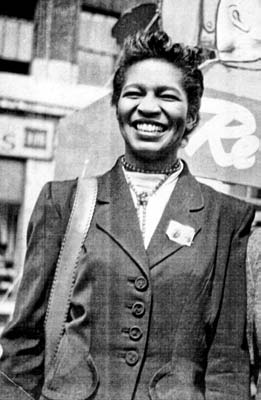Claudia Jones, a journalist and political activist from Trinidad & Tobago, was born in 1915. She relocated to Harlem, New York, with her parents and three sisters when she was nine years old.
 Claudia Jones
Claudia Jones
When Jones arrived in Harlem, he was confronted with the direct intersection of race, class, and gender, as well as witnessing the expansion of the Universal Negro Improvement Association and the Communist Party USA (CPUSA). She was racially segregated immediately, and she soon understood that she was the “other” with her identities existing solely in relation to the White, the Man, and capitalism. Jones unfortunately contracted tuberculosis, at the age of 17, in 1932, as a result of terrible living circumstances in Harlem.
Alongside this, despite her academic abilities, Jones’ professional options were severely constrained due to her status as an immigrant woman. She started working at a laundrette instead of going to college. During this period, she became a member of a number of social organisations, including the Young Communist League USA. Jones also joined the Daily Worker‘s editorial staff in 1937.
She rose to prominent positions after the war, including executive secretary of the Women’s National Commission and secretary of the Women’s Commission of the Communist Party USA (CPUSA). Through her executive role at CPUSA, and with the help of her Marxist-Feminist perspective, she campaigned for underprivileged women workers, bringing together theoretically: race, class, gender, and anti-imperialism. Following an immigration hearing, she was imprisoned for being a non-US citizen who had joined the Communist Party. Subsequent to this, she was convicted, deported, and imprisoned again for performing “un-American activities”.
Jones was denied entry to Trinidad and Tobago but was offered humanitarian residency in the United Kingdom. Jones died on Christmas Eve, 1964, at the age of 49, after participating in several activist initiatives. Her funeral was a massive and political event, with her burial place chosen to be to the left of her hero, Karl Marx’s, tomb. Claudia Jones’ legacy remains on, particularly through the Notting Hill Carnival, which she helped to establish in 1959 as an annual exhibition of Caribbean talent.

